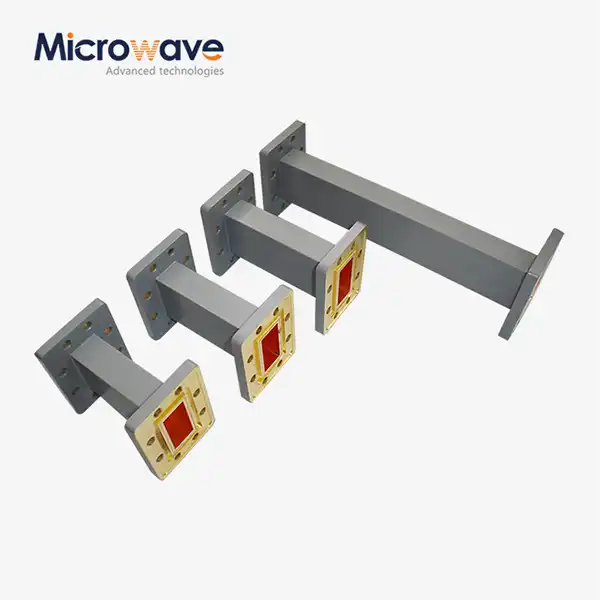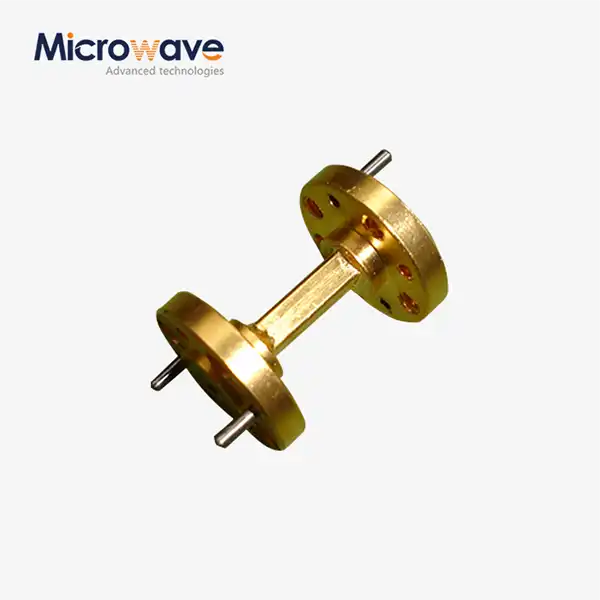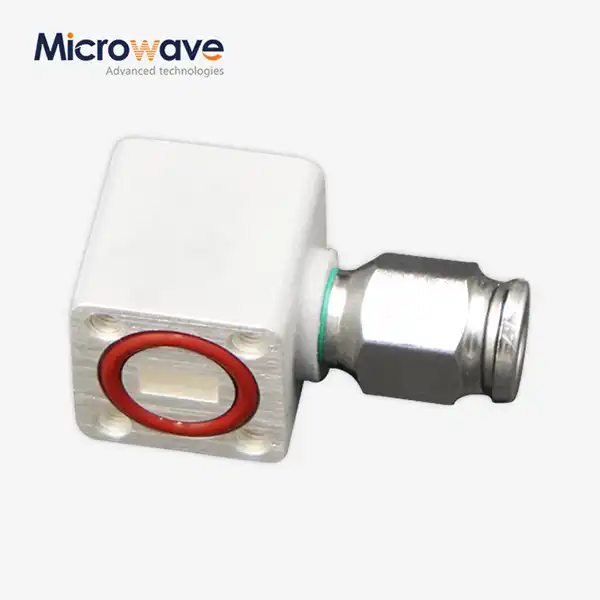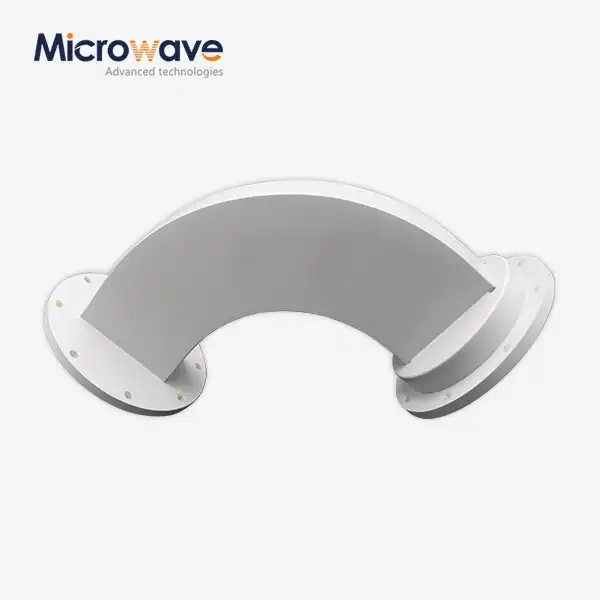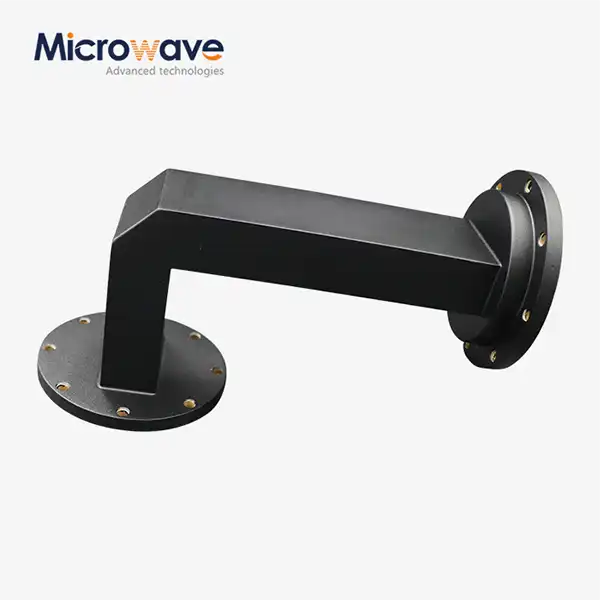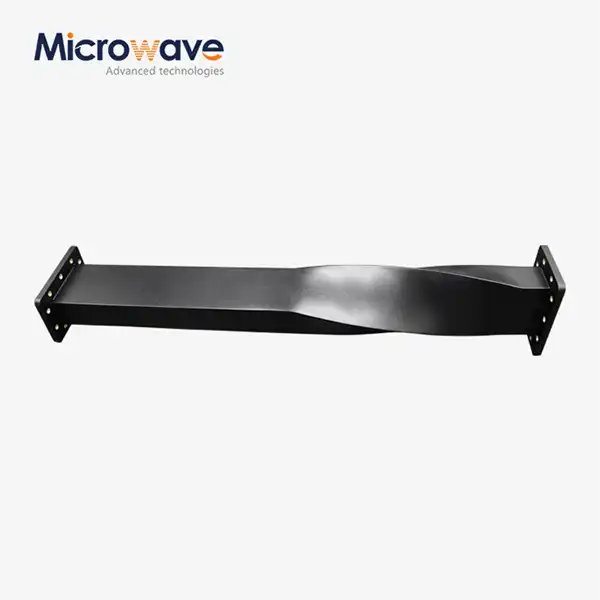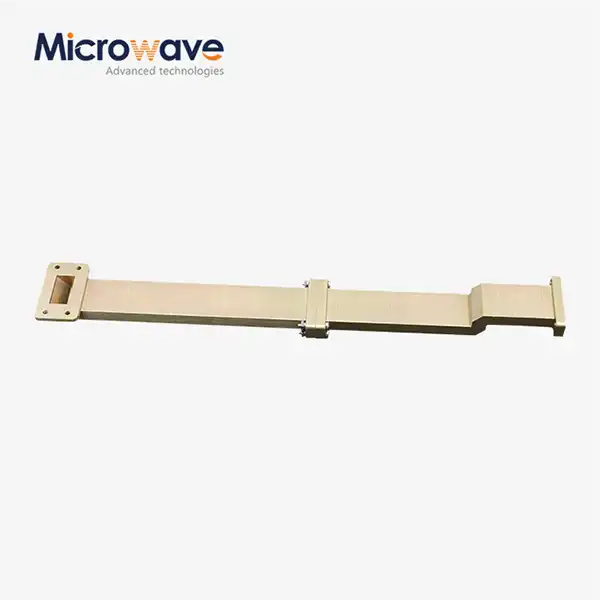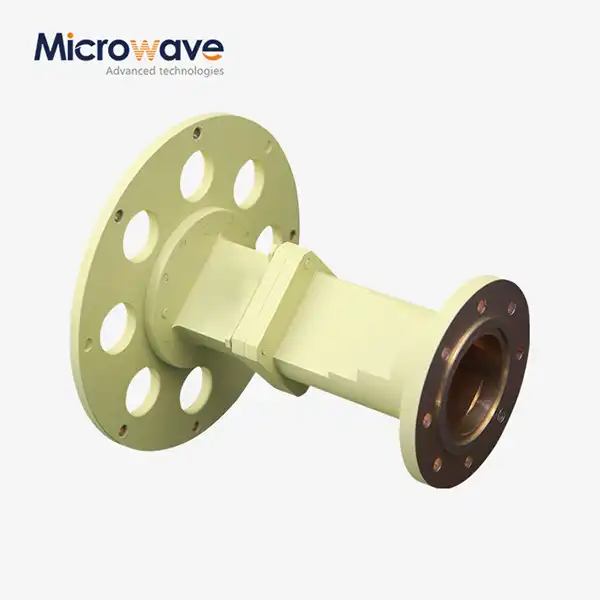How Do You Select the Right Waveguide Unmatched Termination for Multi-Band Satellite Ground Stations?
In the rapidly evolving landscape of satellite communications, selecting the appropriate waveguide unmatched termination for multi-band satellite ground stations represents a critical engineering decision that directly impacts system performance, signal integrity, and operational reliability. As satellite ground stations increasingly operate across multiple frequency bands to accommodate diverse communication requirements, the choice of termination components becomes paramount to ensuring optimal signal absorption and preventing unwanted reflections that could compromise system efficiency. This comprehensive guide explores the essential considerations, technical specifications, and practical approaches necessary for making informed decisions about waveguide unmatched termination selection, addressing the unique challenges faced by engineers and system designers in today's demanding satellite communication environments.Choosing the right waveguide unmatched termination for multi-band satellite ground stations requires careful evaluation of frequency coverage, power handling capabilities, VSWR specifications, and environmental conditions. The ideal waveguide unmatched termination must provide consistent performance across the entire operational frequency range while maintaining low reflection coefficients and high signal absorption efficiency. Key selection criteria include compatibility with existing waveguide standards, temperature stability, and long-term reliability under continuous operation conditions.
Understanding Multi-Band Frequency Requirements and Compatibility
Frequency Range Analysis for Satellite Communications
Multi-band satellite ground stations typically operate across various frequency spectrums, including L-band (1-2 GHz), S-band (2-4 GHz), C-band (4-8 GHz), X-band (8-12 GHz), Ku-band (12-18 GHz), K-band (18-27 GHz), and Ka-band (27-40 GHz), with some advanced systems extending into millimeter-wave frequencies up to 110 GHz. When selecting a waveguide unmatched termination, understanding these frequency requirements becomes crucial because different bands present unique propagation characteristics and absorption challenges. The termination must demonstrate consistent performance across the entire operational bandwidth, ensuring that signal absorption remains effective at both the lower and upper frequency limits. Advanced Microwave offers waveguide unmatched termination solutions that support frequencies up to 110 GHz, making them suitable for both legacy communication systems and cutting-edge applications. The wide frequency coverage ensures compatibility with current satellite constellations while providing headroom for future technological advancements. Engineers must consider not only the primary operating frequencies but also potential harmonics and spurious signals that could affect system performance, making broadband termination capabilities an essential selection criterion.
Waveguide Standard Compatibility Assessment
The physical interface between the waveguide unmatched termination and the existing system infrastructure requires careful attention to standard compatibility. Common waveguide standards include WR-90 for X-band applications, WR-62 for Ku-band systems, WR-42 for K-band operations, and various other rectangular and circular waveguide configurations. Each standard defines specific dimensional requirements, impedance characteristics, and connection mechanisms that must be precisely matched to ensure proper signal transfer and mechanical integrity. The waveguide unmatched termination must conform to these standards while providing the necessary absorption characteristics across the intended frequency range. Advanced manufacturing techniques allow for precise dimensional control, ensuring that terminations meet or exceed industry specifications for mechanical fit and electrical performance. System designers must also consider the transition losses that may occur at connection points, as improper matching can introduce reflections that defeat the purpose of the termination. The selection process should include verification of flange compatibility, gasket requirements, and any special mounting considerations that may affect installation and maintenance procedures.
Material Selection and Electrical Properties
The choice of materials used in waveguide unmatched termination construction significantly impacts both electrical performance and long-term reliability. Absorbing materials must provide consistent absorption characteristics across the intended frequency range while maintaining stability under varying environmental conditions. Carbon-loaded ceramics, ferrite materials, and specialized polymer composites each offer different absorption mechanisms and frequency responses. The waveguide unmatched termination housing typically utilizes high-conductivity materials such as brass, aluminum, or silver-plated surfaces to minimize losses in the transmission sections while directing energy into the absorbing elements. Material selection also affects thermal management, as absorbed microwave energy converts to heat that must be dissipated to prevent performance degradation or component damage. Advanced material engineering allows for the development of terminations that maintain consistent electrical properties across wide temperature ranges, ensuring reliable operation in diverse environmental conditions. The dielectric properties of absorbing materials must remain stable over time to prevent performance drift that could affect system calibration and measurement accuracy.
Power Handling and VSWR Performance Specifications
Maximum Power Rating Considerations
Power handling capability represents a fundamental specification for waveguide unmatched termination selection in satellite ground station applications. High-power transmitter systems require terminations that can safely absorb and dissipate significant amounts of microwave energy without thermal damage or performance degradation. The power rating must account for both continuous wave (CW) and peak power conditions, as satellite communication systems often employ various modulation schemes that create different power distribution patterns. Thermal management becomes critical at higher power levels, requiring careful consideration of heat dissipation mechanisms, cooling requirements, and thermal cycling effects. Advanced Microwave's waveguide unmatched termination designs incorporate high-power handling capabilities suitable for demanding satellite communication applications. The absorbing materials and mechanical construction must withstand repeated thermal cycling without cracking, delamination, or other failure modes that could compromise performance. Engineers must also consider safety margins to account for operational variations, aging effects, and potential fault conditions that might temporarily increase power levels beyond normal operating parameters.
VSWR Specifications and Reflection Management
Voltage Standing Wave Ratio (VSWR) specifications define the reflection characteristics of the waveguide unmatched termination and directly impact system performance. Lower VSWR values indicate better impedance matching and reduced reflections, which is particularly important in precision measurement applications and sensitive receiver systems. Advanced Microwave typically provides waveguide unmatched termination products with VSWR values ranging from 1.2 to 2.0, with accuracy specifications of VSWR+0.02 over the full waveguide bandwidth. These specifications ensure that reflections remain at acceptably low levels across the entire operational frequency range, preventing interference with system calibration and measurement accuracy. The VSWR performance must remain stable over temperature variations and aging effects to maintain long-term system reliability. In multi-band applications, the VSWR specification becomes more challenging because the termination must provide consistent performance across multiple frequency ranges with potentially different impedance characteristics. Careful design and material selection enable the achievement of low VSWR values across wide bandwidths while maintaining mechanical robustness and environmental stability.
Temperature Stability and Environmental Performance
Environmental conditions significantly affect the performance of waveguide unmatched termination components, particularly in outdoor satellite ground station installations. Temperature variations can cause changes in material properties, dimensional stability, and electrical characteristics that may degrade system performance. The termination must maintain consistent VSWR and absorption characteristics across the expected temperature range, typically from -40°C to +85°C for outdoor applications. Humidity, precipitation, and solar radiation exposure present additional challenges that require appropriate material selection and protective measures. Advanced sealing techniques and environmental protection ensure that the waveguide unmatched termination maintains performance integrity under harsh conditions. Thermal expansion coefficients must be carefully managed to prevent mechanical stress that could affect electrical connections or cause seal failures. Long-term stability testing validates the ability of termination components to maintain specifications over extended periods of environmental exposure, ensuring reliable operation throughout the expected service life of the satellite ground station system.
Installation Integration and System Optimization
Mechanical Integration and Mounting Requirements
Proper mechanical integration of waveguide unmatched termination components requires careful attention to mounting arrangements, support structures, and accessibility for maintenance operations. The termination must be positioned to provide effective signal absorption while allowing for thermal expansion, vibration isolation, and service access. Weight considerations become important in tower-mounted applications where structural loading affects antenna pointing accuracy and mechanical stability. The mounting system must provide secure attachment while accommodating thermal cycling and environmental stresses without introducing mechanical strain that could affect electrical performance. Advanced Microwave's waveguide unmatched termination designs consider these mechanical requirements, providing robust mounting interfaces and environmental protection suitable for demanding installation conditions. Installation procedures must account for proper torque specifications, gasket installation, and weatherproofing measures to ensure long-term reliability. The integration process should include provisions for future maintenance and replacement activities, ensuring that termination components can be serviced without disrupting other system elements.
System Performance Optimization Techniques
Optimizing the performance of waveguide unmatched termination installations requires consideration of the entire signal path and system interactions. Proper grounding, shielding, and EMI/RFI mitigation ensure that the termination functions effectively without introducing interference or noise into the system. The placement of terminations relative to other system components affects overall performance, requiring careful system-level design consideration. Advanced measurement and testing procedures validate that the installed termination meets performance specifications and operates correctly within the complete system context. Calibration procedures may require periodic verification of termination performance to maintain measurement accuracy and system reliability. The waveguide unmatched termination should integrate seamlessly with existing monitoring and control systems, providing status information and diagnostic capabilities where appropriate. System documentation must include termination specifications, installation procedures, and maintenance requirements to support ongoing operations and troubleshooting activities.
Maintenance and Lifecycle Considerations
Long-term maintenance requirements significantly impact the total cost of ownership for waveguide unmatched termination installations. The components must be designed for extended service life with minimal maintenance requirements while providing predictable performance characteristics throughout their operational lifetime. Regular inspection procedures should verify mechanical integrity, electrical performance, and environmental seal effectiveness to prevent premature failures. Replacement planning considers both scheduled maintenance intervals and potential failure modes that could require emergency service. Advanced Microwave provides comprehensive technical support and replacement components to ensure continued system availability. The maintenance procedures must be compatible with the operational requirements of the satellite ground station, minimizing downtime and service disruptions. Spare parts availability and technical support capabilities affect the overall system reliability and operational costs. Proper documentation and training enable maintenance personnel to perform required services effectively while maintaining safety and performance standards.
Conclusion
Selecting the right waveguide unmatched termination for multi-band satellite ground stations requires comprehensive evaluation of frequency requirements, power handling capabilities, VSWR performance, and environmental conditions. Success depends on understanding system-level interactions, proper installation procedures, and long-term maintenance considerations. The investment in high-quality termination components pays dividends through improved system reliability, measurement accuracy, and operational efficiency throughout the service life of the satellite communication system.
Ready to enhance your satellite ground station performance with precision-engineered waveguide solutions? Advanced Microwave Technologies Co., Ltd brings over 20 years of microwave expertise, ISO-certified quality standards, and cutting-edge testing capabilities up to 110 GHz to your most demanding applications. Our expert engineering team stands ready to provide customized solutions, rapid prototyping, and comprehensive technical support tailored to your specific requirements. Whether you're upgrading existing systems or designing next-generation satellite communication networks, we deliver the reliability and performance your mission-critical applications demand. Contact our technical specialists today at craig@admicrowave.com to discuss your waveguide unmatched termination requirements and discover how our proven solutions can optimize your system performance.
References
1.Johnson, R. C., & Jasik, H. (2019). Antenna Engineering Handbook: Waveguide Components and Termination Design. McGraw-Hill Professional.
2.Pozar, D. M. (2021). Microwave Engineering: Waveguide Theory and Applications. 5th Edition, John Wiley & Sons.
3.Balanis, C. A. (2020). Advanced Engineering Electromagnetics: Satellite Communication Systems. 3rd Edition, John Wiley & Sons.
4.Collin, R. E. (2018). Foundations for Microwave Engineering: Waveguide Termination and Matching Networks. 2nd Edition, IEEE Press.
5.Ramo, S., Whinnery, J. R., & Van Duzer, T. (2019). Fields and Waves in Communication Electronics: Multi-Band System Design. 4th Edition, John Wiley & Sons.
6.Silver, S. (2020). Microwave Antenna Theory and Design: Ground Station Applications. Revised Edition, Institution of Engineering and Technology.




